Hans Christian Andersen Fairy-Tale House
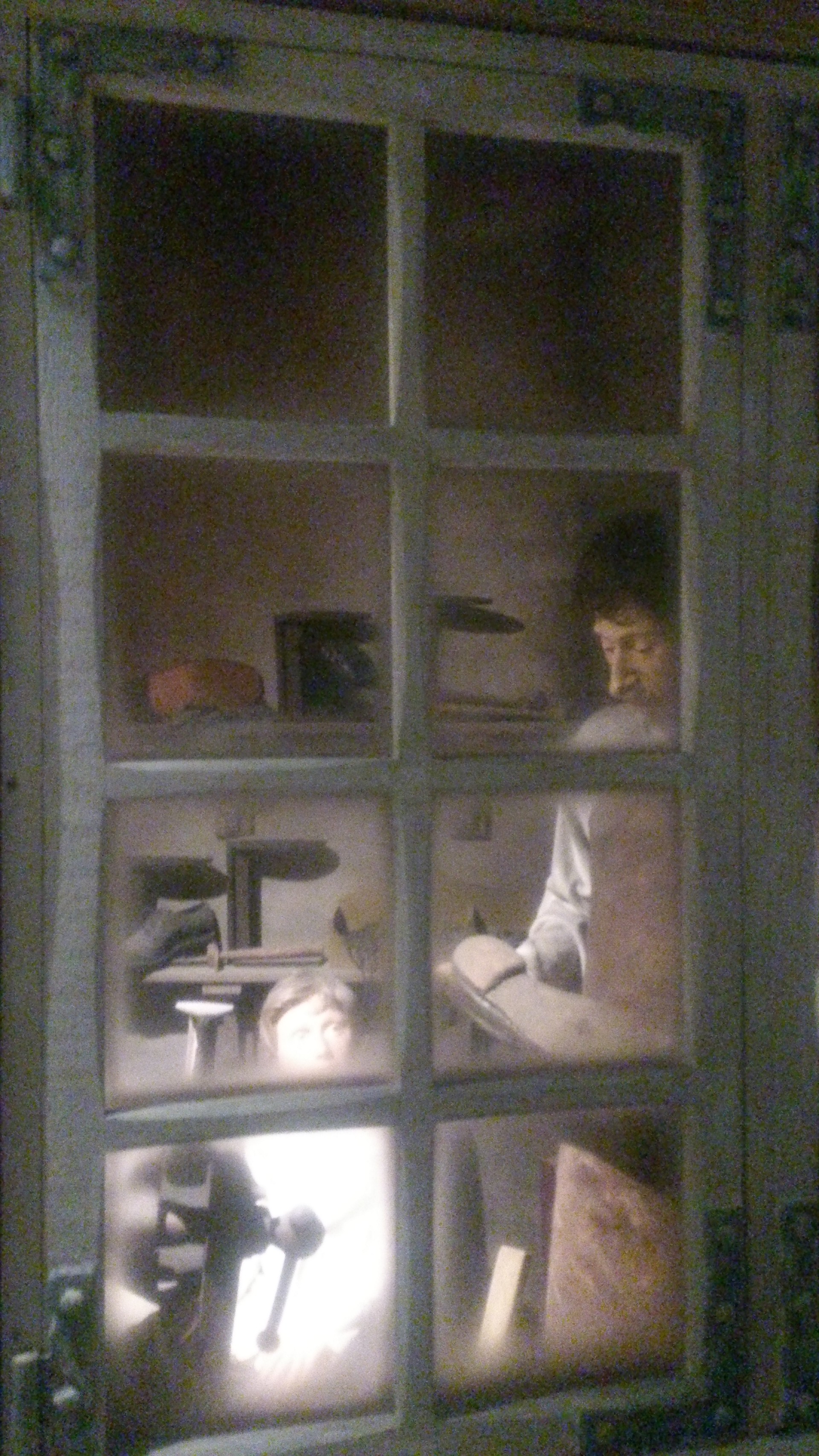
The introduction
Hello everyone, I hope, that you are all doing just fine!
Well, I’m sure, that you have all heard about the famous writer Hans Christian Andersen, I mean, who hasn’t read his fairy-tales when they were children?! Or, at least, you have seen that cartoon about Ariel and her lover. Well, actually, the cartoon is a little bit different from the fairy-tale, however, it has this happy ending, which children love and that’s why it’s different from the fairy-tale, I guess, so that the children won’t cry in the end.

To be honest, I really loved fairy-tales when I was a child and I read all those fairy-tale books, that we had and I even borrowed some from my other grandmother, who also had some fairy-tale books in her house. To tell you the truth, I didn’t really have those fairy-tales back then, which were written by Hans Christian Andersen and I first met his stories through the cartoons and I loved the cartoons, I must tell you, though I didn’t really know, what was the real ending of that story in the fairy-tale.
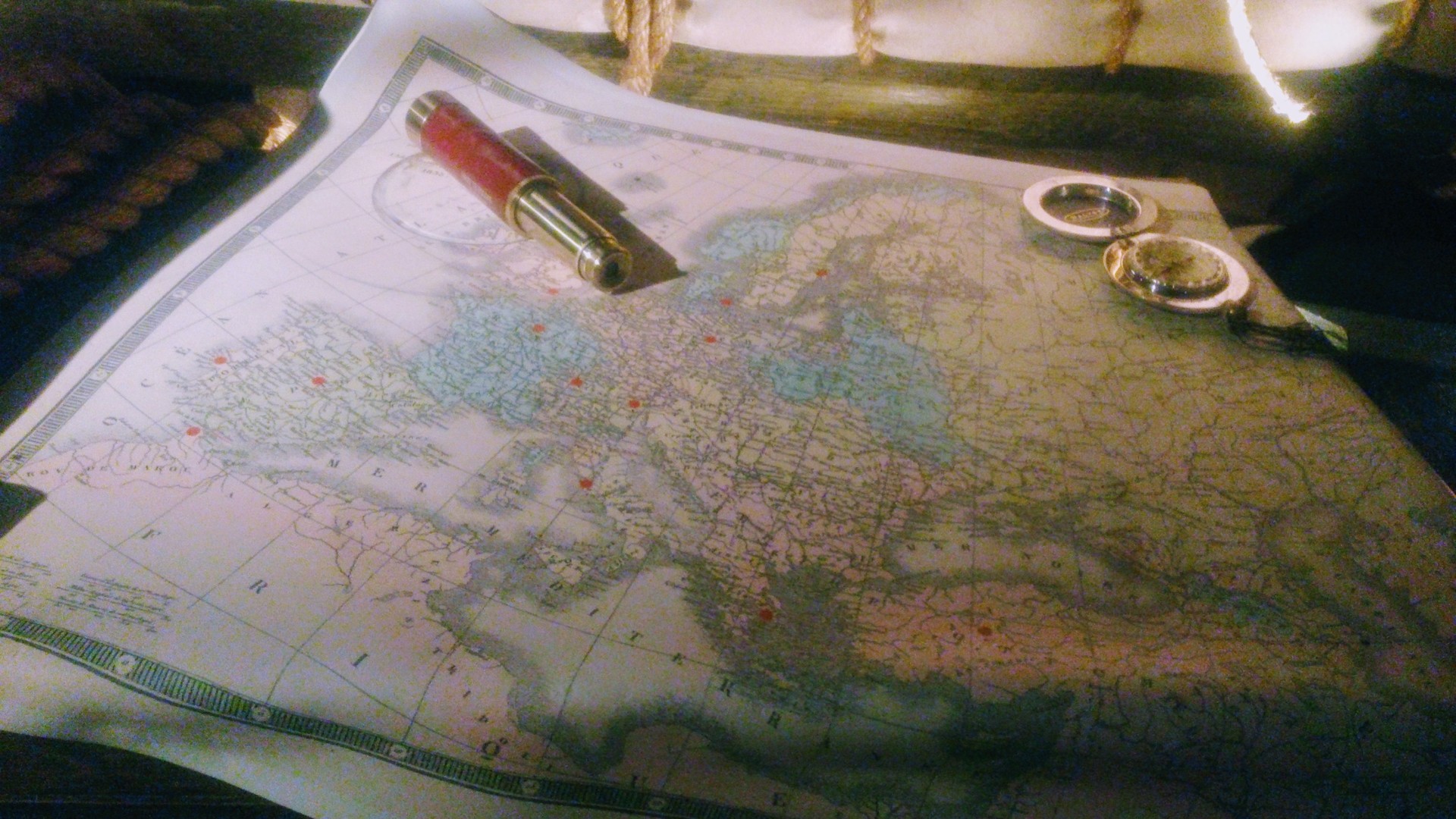
So, this great writer Hans Christian Andersen was born in Denmark and this was a country where I was going to go this summer, so that it was a pleasure for me to visit the country, where he grew up and wrote his fairy-tales and I would visit his museum and become a member of those fairy-tales for some time.
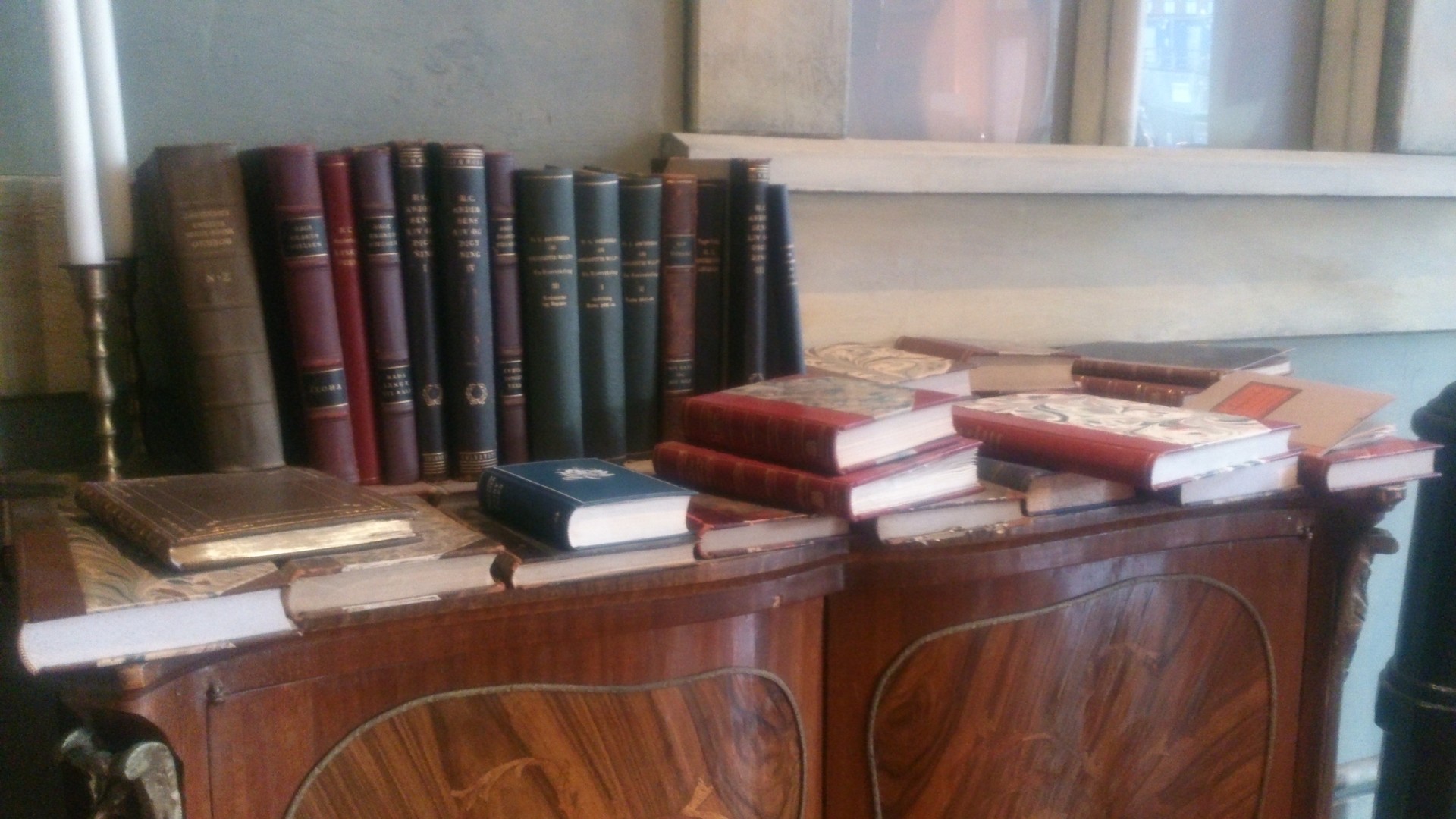
Maybe you don’t even know, that the symbol of Copenhagen and Denmark, in general, is a little mermaid, which is the main character in Hans Christian Andersen’s fairy-tale and that’s the one, which I told you about in the beginning of this article. They even have a little mermaid statue, which is a free tourist attraction and people just go there to see it and take pictures. However, it’s not as big as people imagine it to be and it’s a pretty much a disappointment in that case, however, it’s still a very popular place in Copenhagen and people just want to see it themselves.

Hans Christian Andersen museum Copenhagen
I don’t know, whether you know, that there’s this Hans Christian Andersen’s museum in Copenhagen. To tell you the truth, I didn’t really know about it until some time ago. Well, technically, it’s called Hans Christian Andersen Fairy-Tale House and that’s the exact thing for that, I guess, because there are those Hans Christian Andersen’s fairy-tales inside the building.
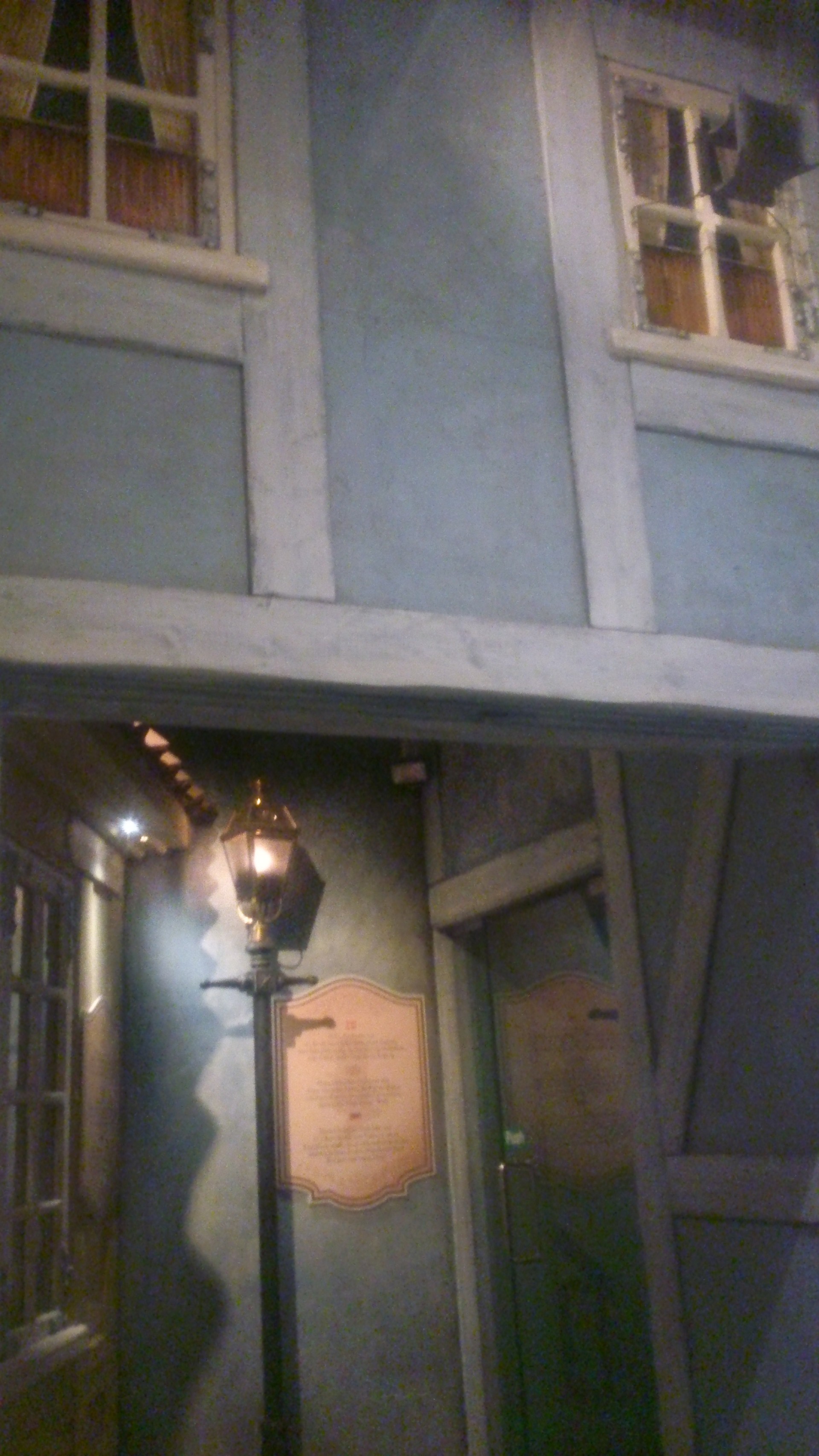
The Hans Christian Andersen Fairy-Tale House is located practically in the center of Copenhagen. It’s located on the Radhuspladsen 57 and if you don’t know, that it is there, you might even probably not see it, it’s so small or something like that, which I didn’t really like, however, getting inside, it doesn’t seem to be that small, if you want to know the truth. However, I still anticipated it to be much larger.
Well, if you want to visit the museum, the opening hours usually are from 10 a. m. till 6 p. m., however, you should check it on the website or somewhere else, because the opening hours change during seasons of the year and the holidays and things like that.
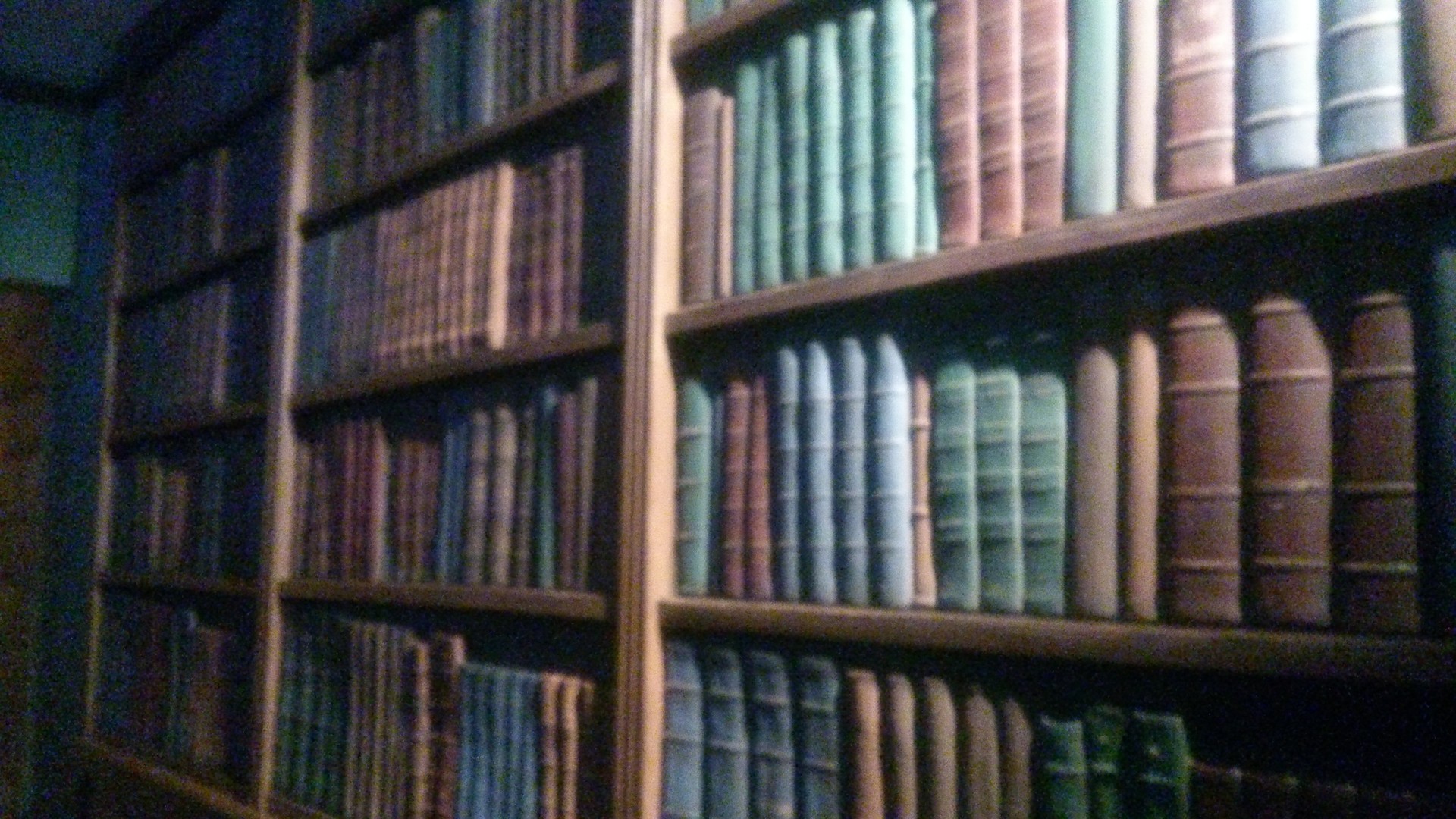
The prices for the adults are 54 DKK and for children from the age of 4 to 11 it’s 36 DKK. However, I was there with my Copenhagen card, so that it was free for me to get inside and see the Hans Christian Andersen’s Fairy-Tale House.
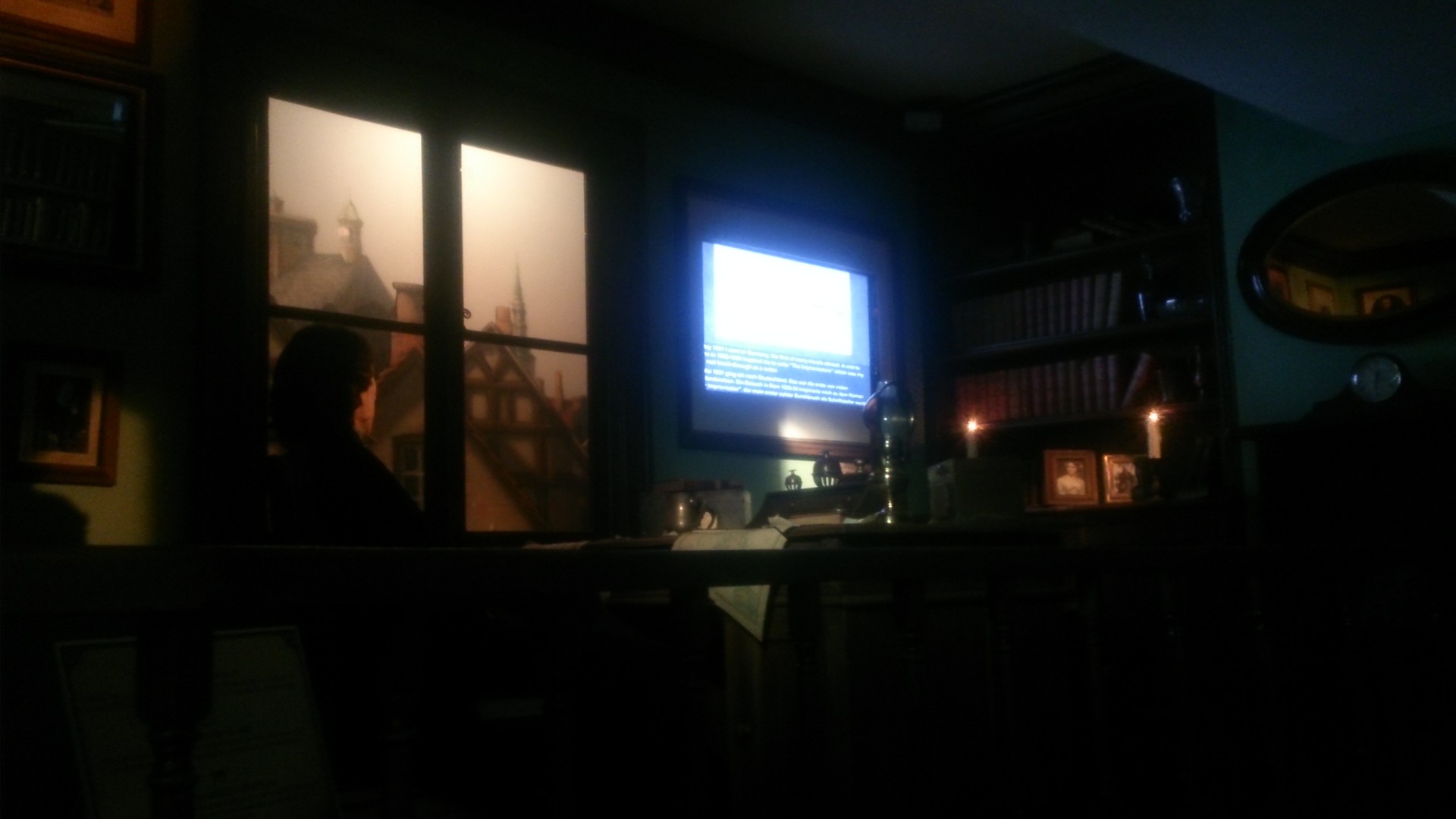
So, Hans Christian Andersen was born in Odense on the 2-nd of April 1805 and he was christened at home on the same day. Odense was the only town in the provinces to have two newspapers, which were Iversens and Hempels. Odense then was denmark’s second largest city and approximately 6000 people lived there in the 19-th century.

It was in 1812, when he was just 7 years old, when Hans Christian Andersen visited the theatre at Odense for the first time and it’s said, that the inspiration came from there to write some stories and stuff like that.
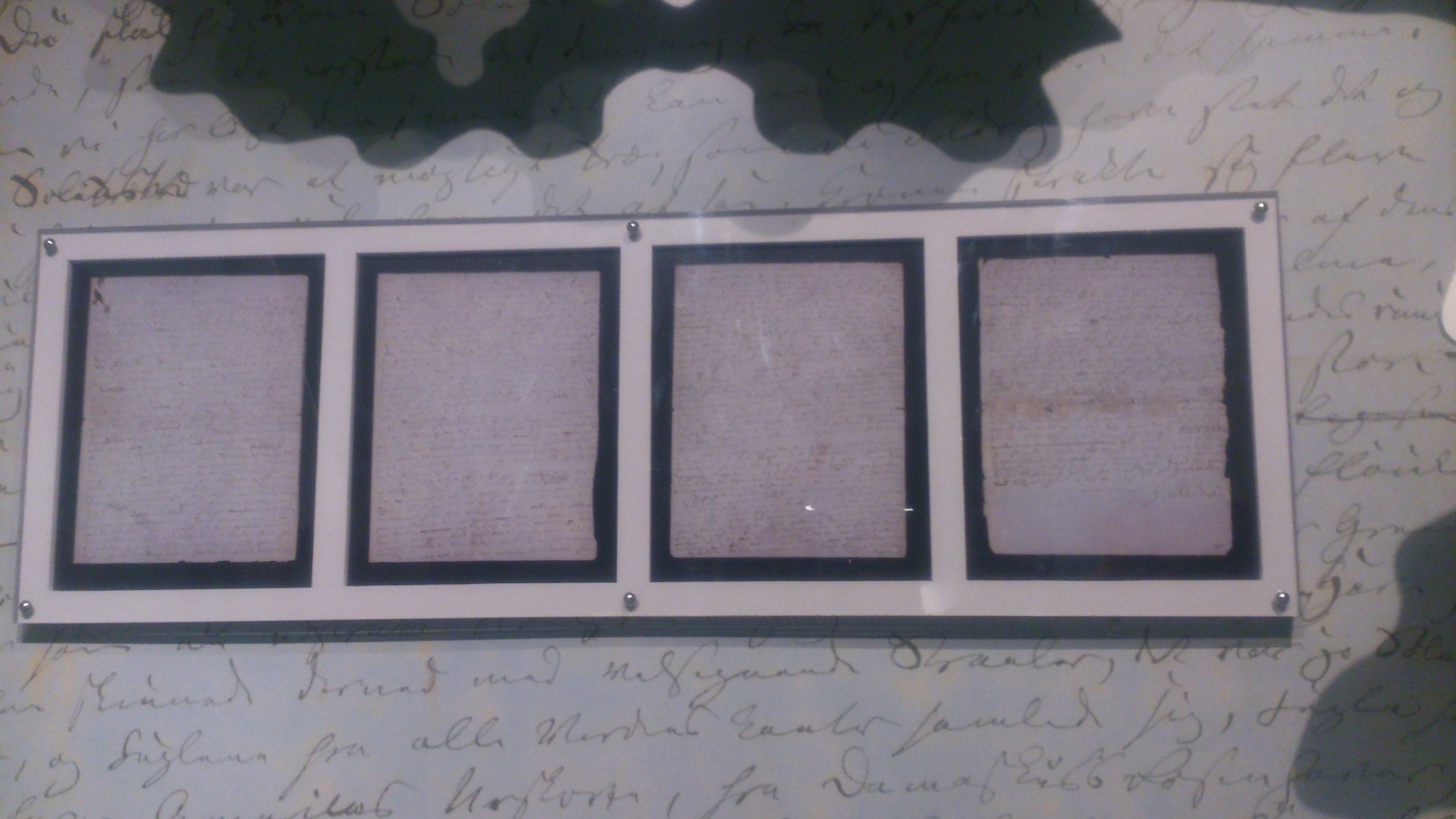
Getting inside the Hans Christian Andersen’s Fairy-Tale House you will see the figure of him sitting on a chair. When you get inside, there’s a guy behind the desk, whom you will show you Copenhagen Card, and if you don’t have one, you will just buy a ticket and then he will give you a coin, which then you should put into some machine when you get inside the museum and then you can start your journey into the fairy-tale house.
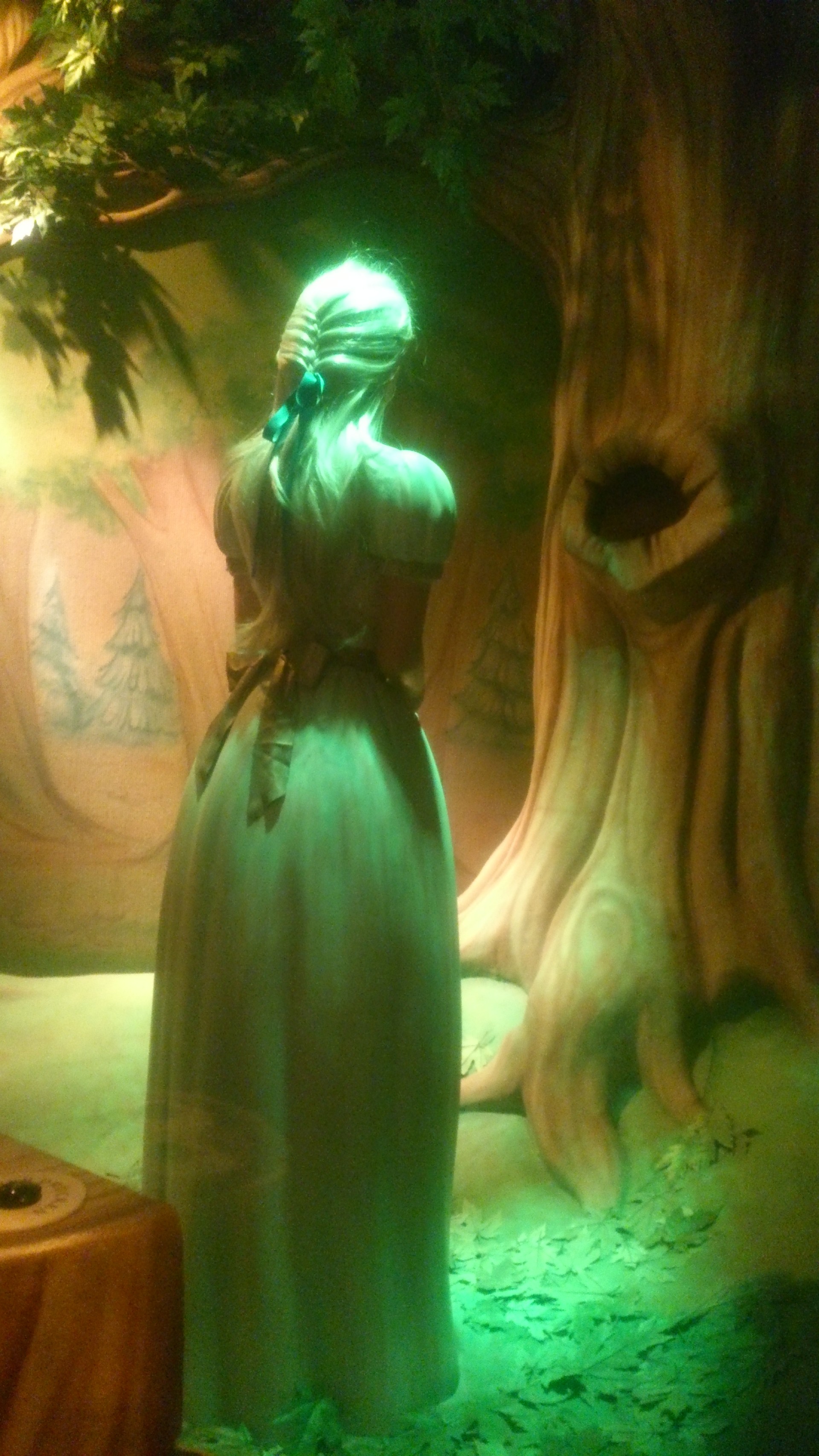
You will see some buildings made from hard paper or something like that, describing the buildings in the 19-th century. There you can look up and see those mirrors on the building windows, which were pretty common in Denmark in those ages. They were called “spy viewers” and they allowed the residents of the buildings to view up and down the street without having to lean out of the window. It was a pretty good idea then and it was a great invention, if you ask me.
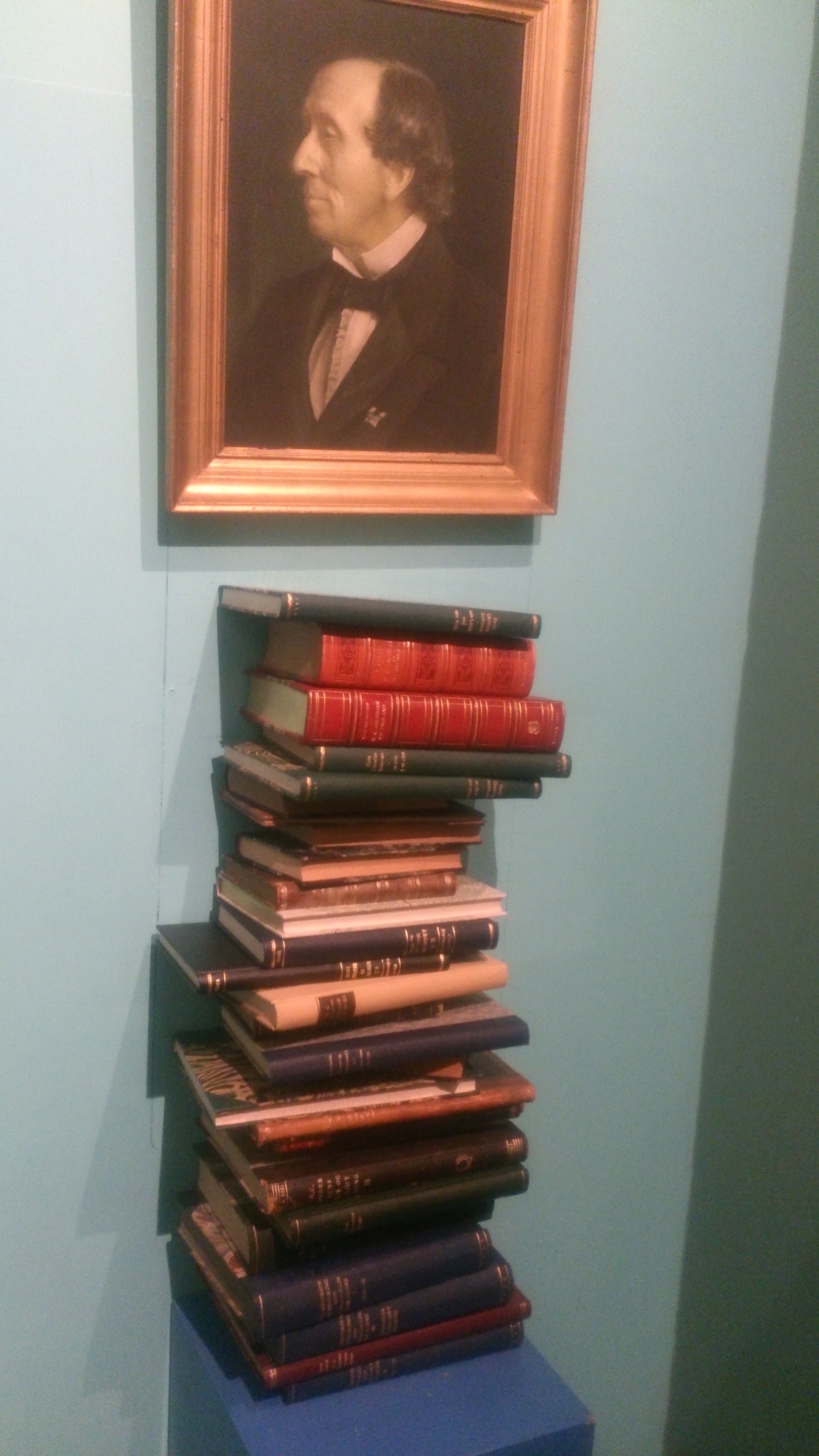
Andersen was brought up in a house consisting of a single room, which had almost completely been taken up with his father’s shoemaker’s bench. There you can see his father sitting at the window, mending the shoes or whatever. His father was an independent shoemaker and his mother was a washerwoman. The family didn’t have a permanent address until they moved to Munkemollestraede in 1807.
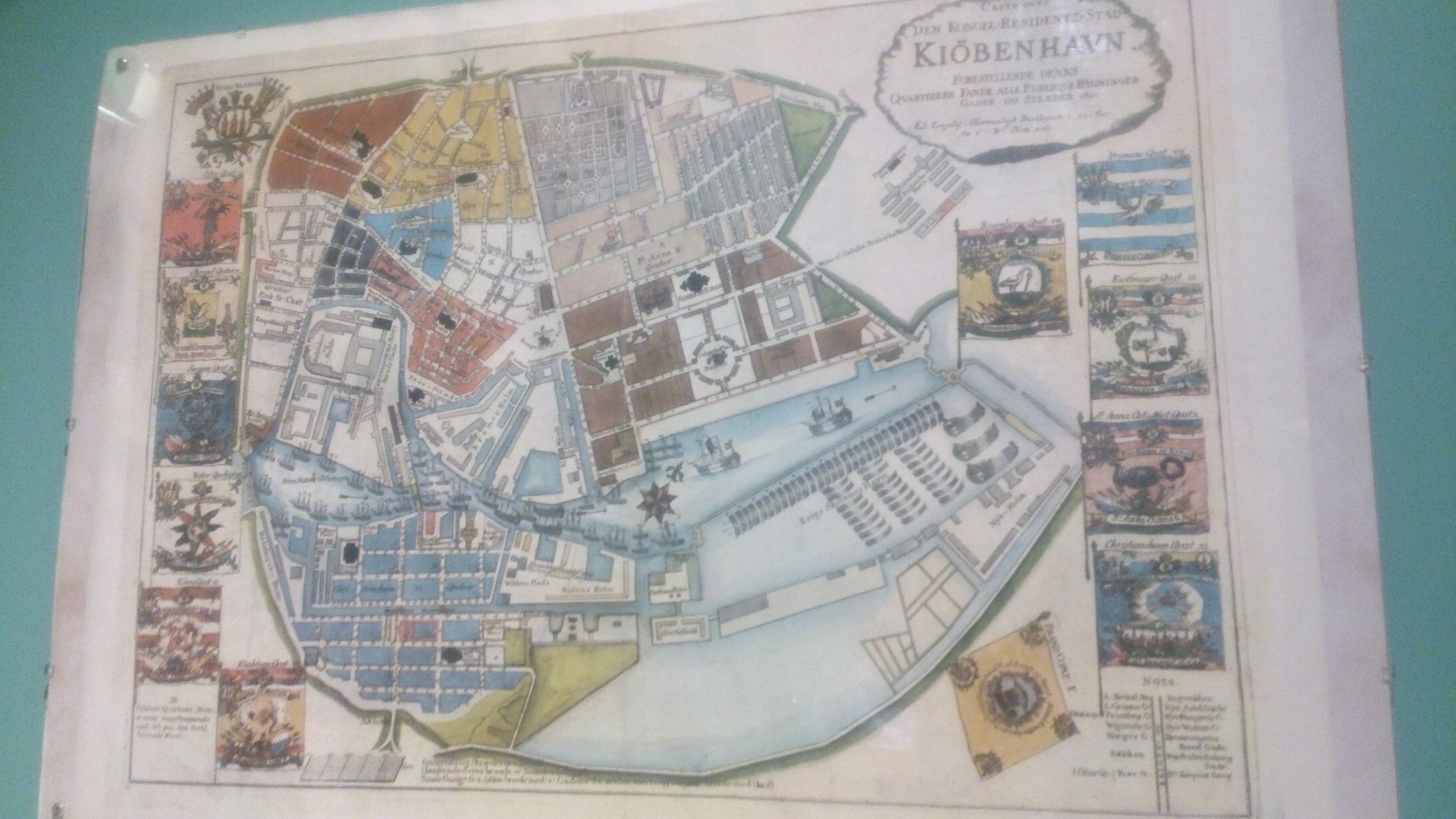
Hand Christian Andersen was 11 years old when his father died of an illness, which he contracted when he enlisted as a soldier during the Napoleonic Wars.
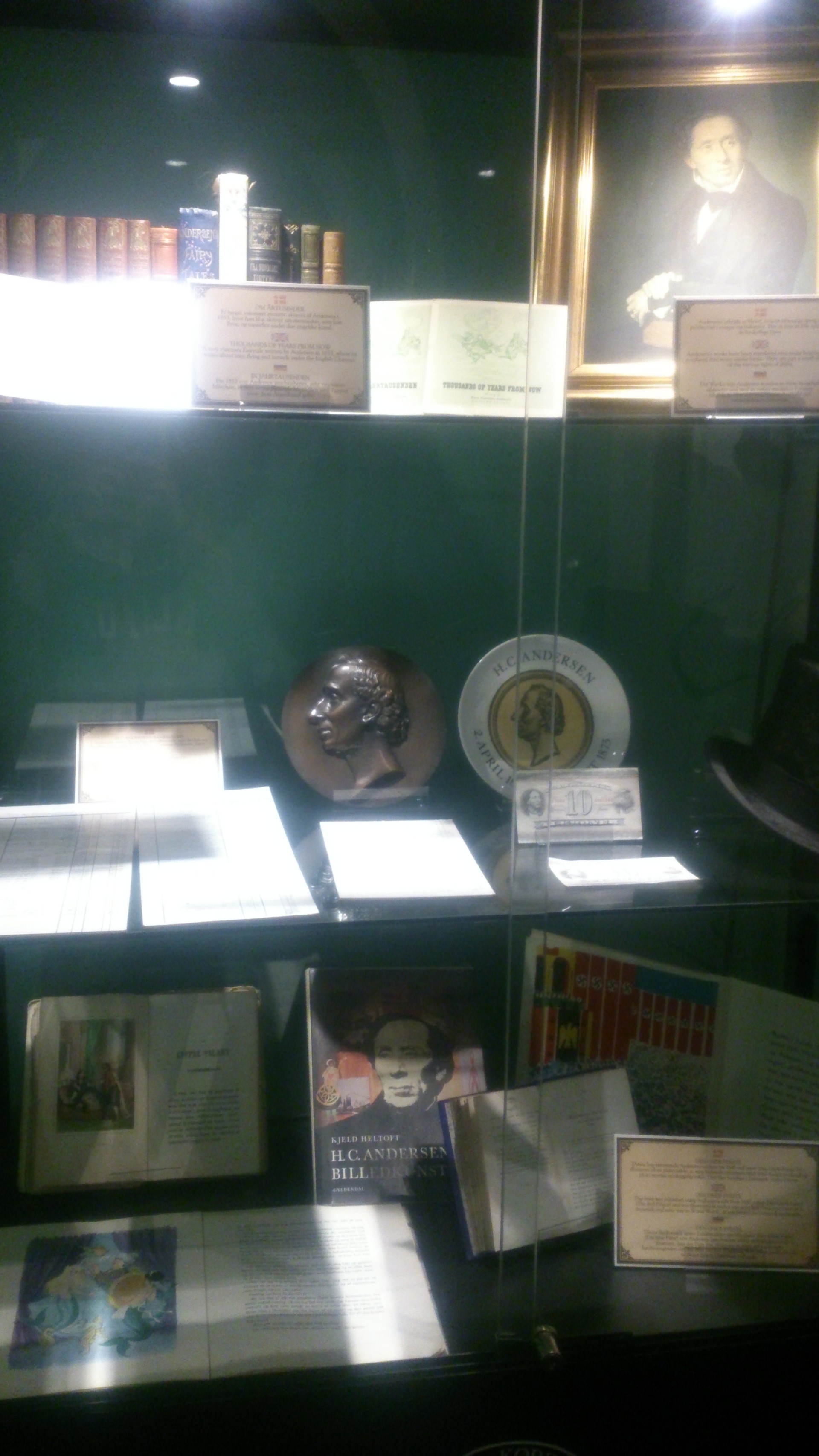
Walking through the rooms, you will see a room with Andersen’s figure in it sitting on a chair at a desk near the window, where you can see a splendid view of some other buildings outside, which had those characteristic architecture of those ages and there are lots of books on the shelves in front of Hans Christian Andersen.
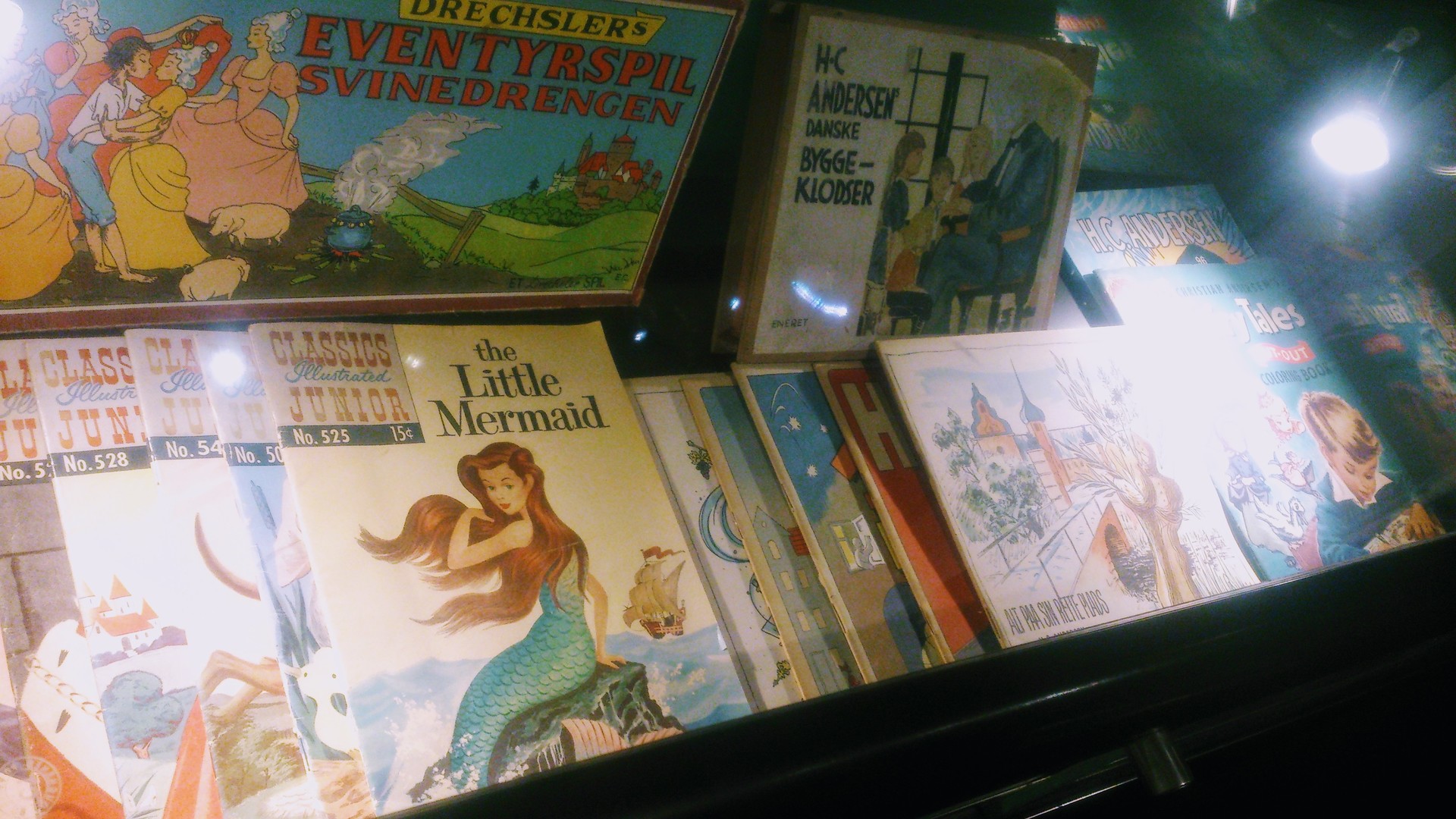
You can see the manuscripts of Hans Christian Andersen’s tale “the Philosopher’s Stone”, which consists of 14 pages in all and it’s very well preserved. It is an original one and it was bought by the owners of Hans Christian Andersen’s Eventyrhuset at a cost of several million Danish Kroner in 2002.

Walking on, you will meet many of Hans Christian Andersen’s characters from the fairy-tales and you can push the buttons and listen to the fairy-tales in Danish, English or in German languages, which is a pretty awesome thing. And there are those figures in front of you from those fairy-tales moving and doing some things, etc.
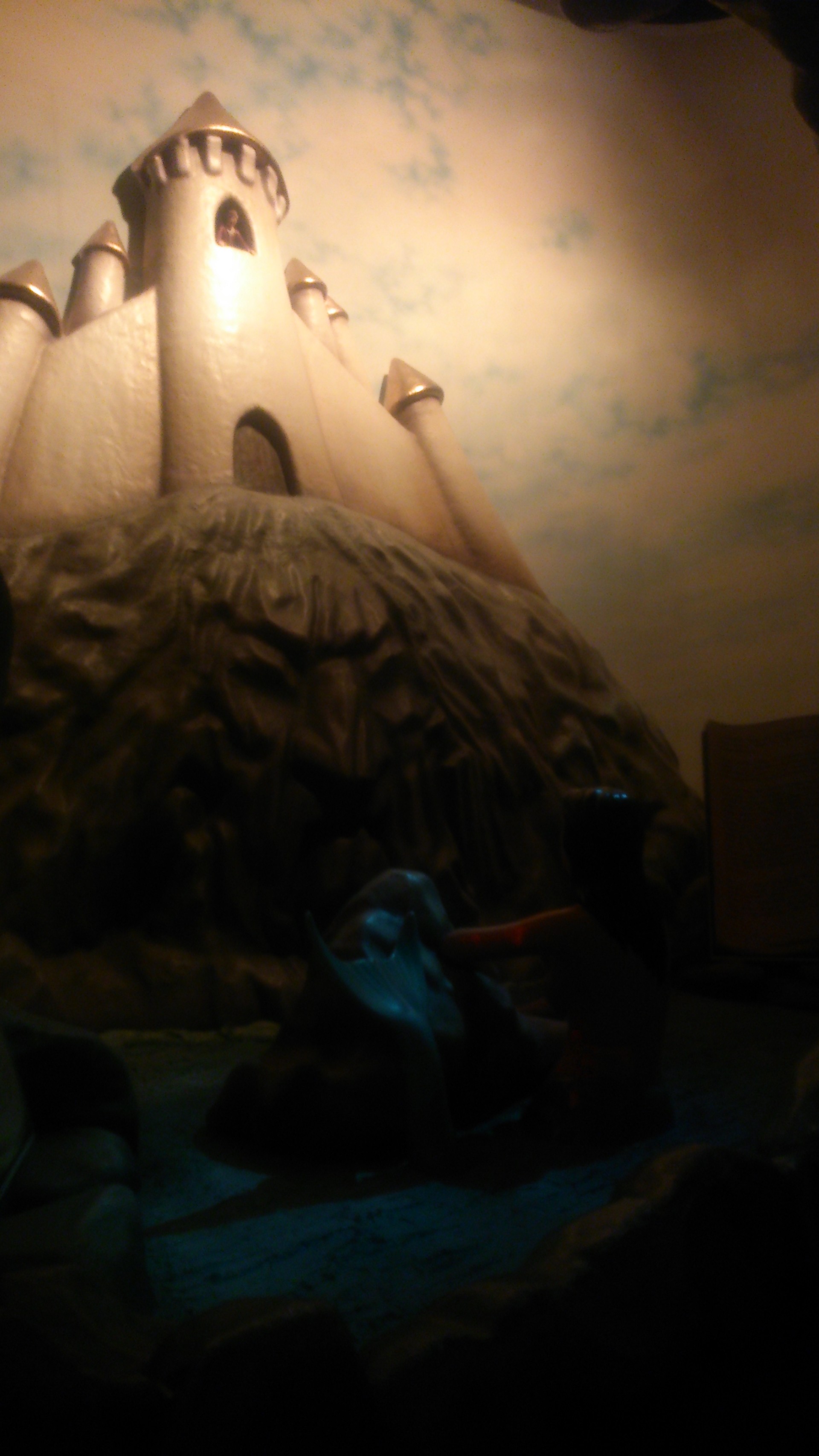
In 1872 Andersen published his last fairy tale called “The Flea and the Professor”. In 1874 he was made “Konferensrad”, which is a high Danish title, now obsolete. And just a year after that in 1875 he died after several years of a serious illness. He died on August 4 at “Rolighed”, the country seat of the Jewish merchant family Melchior. The Melchiors had aken care of him during the final period of his life.
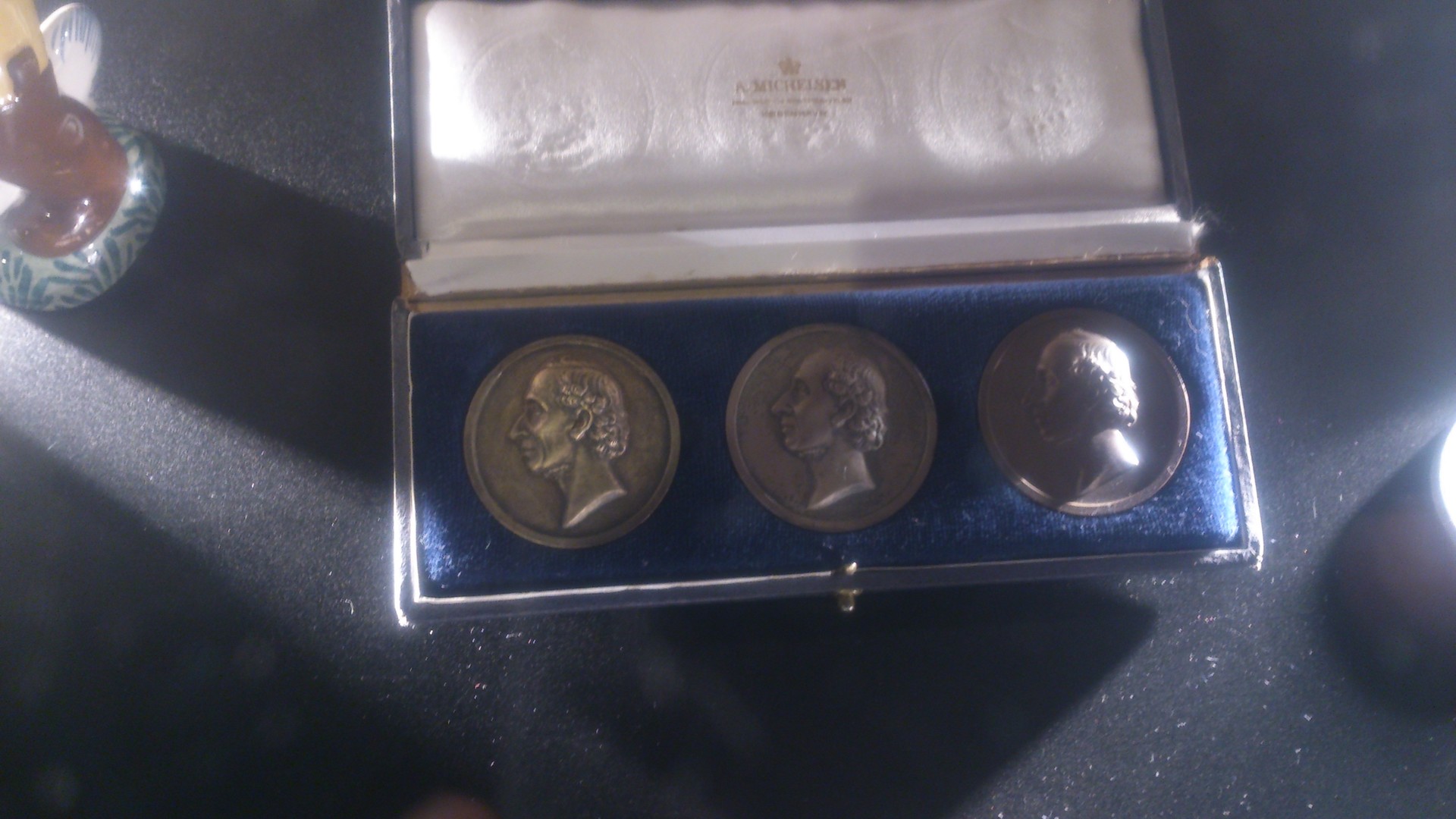
You can see in the museum the newspaper called “Berlingske Tidende”, where there was an article telling, that the readers had elected Hans Christian Andersen “The Greatest Dane of all times”. There were 100 other nominated Danish personalities from past and present and the 34. 6% of the readers voted for Hans Christian Andersen as “The Greatest Dane of all times”, while the nuclear physicist and Nobel prize winner Niels Bohr came the second at 25. 1% (May 2, 2004).
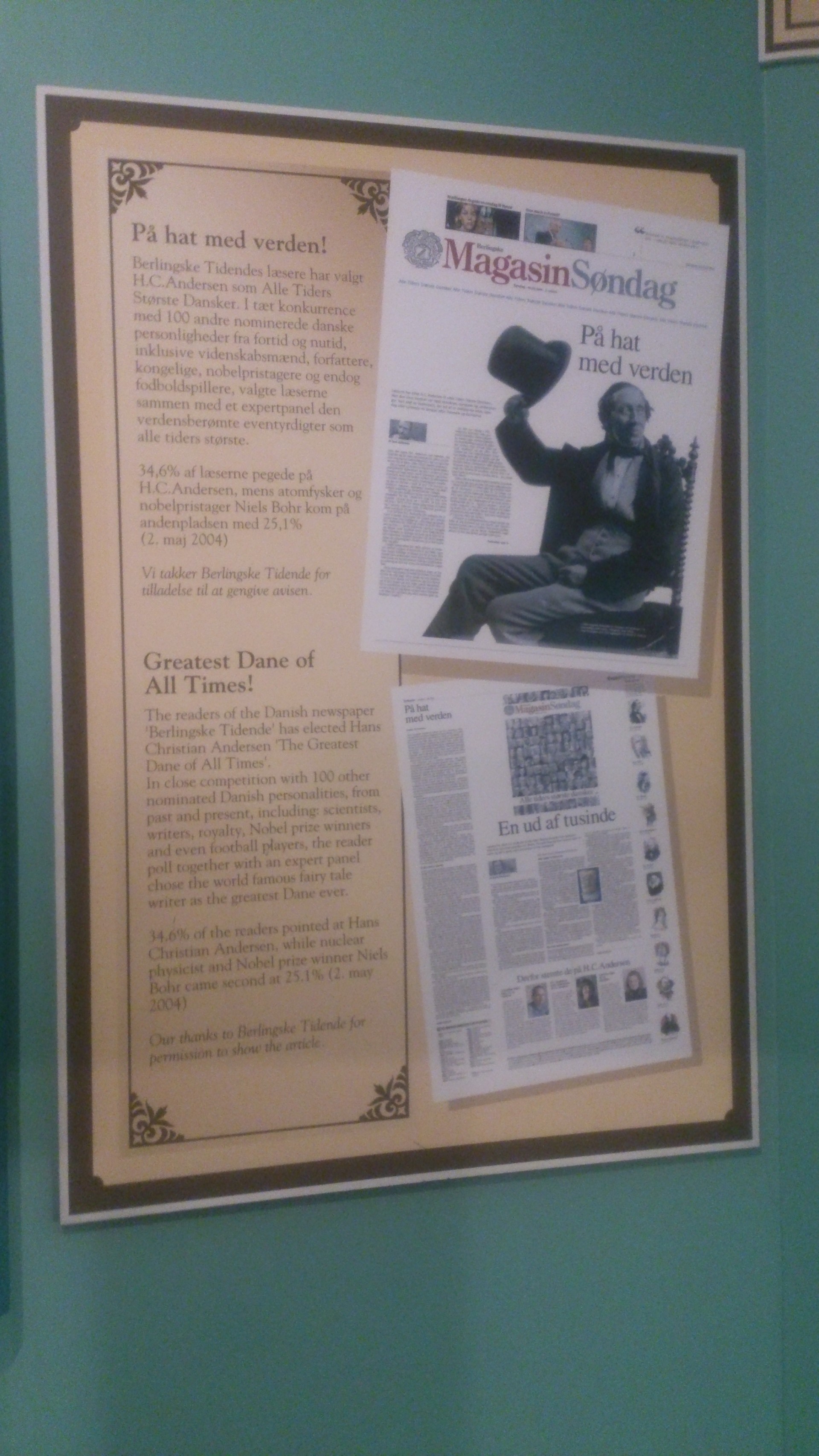
Well, as everything comes to en end, the story of Hans Christian Andersen in this fairy-tale house somehow ends, too, and the visitors are not satisfied with everything, that they saw there and they want even more, however, there’s not much to see and you have to say good-bye to this magical world of fairy-tales and come back to the real life!
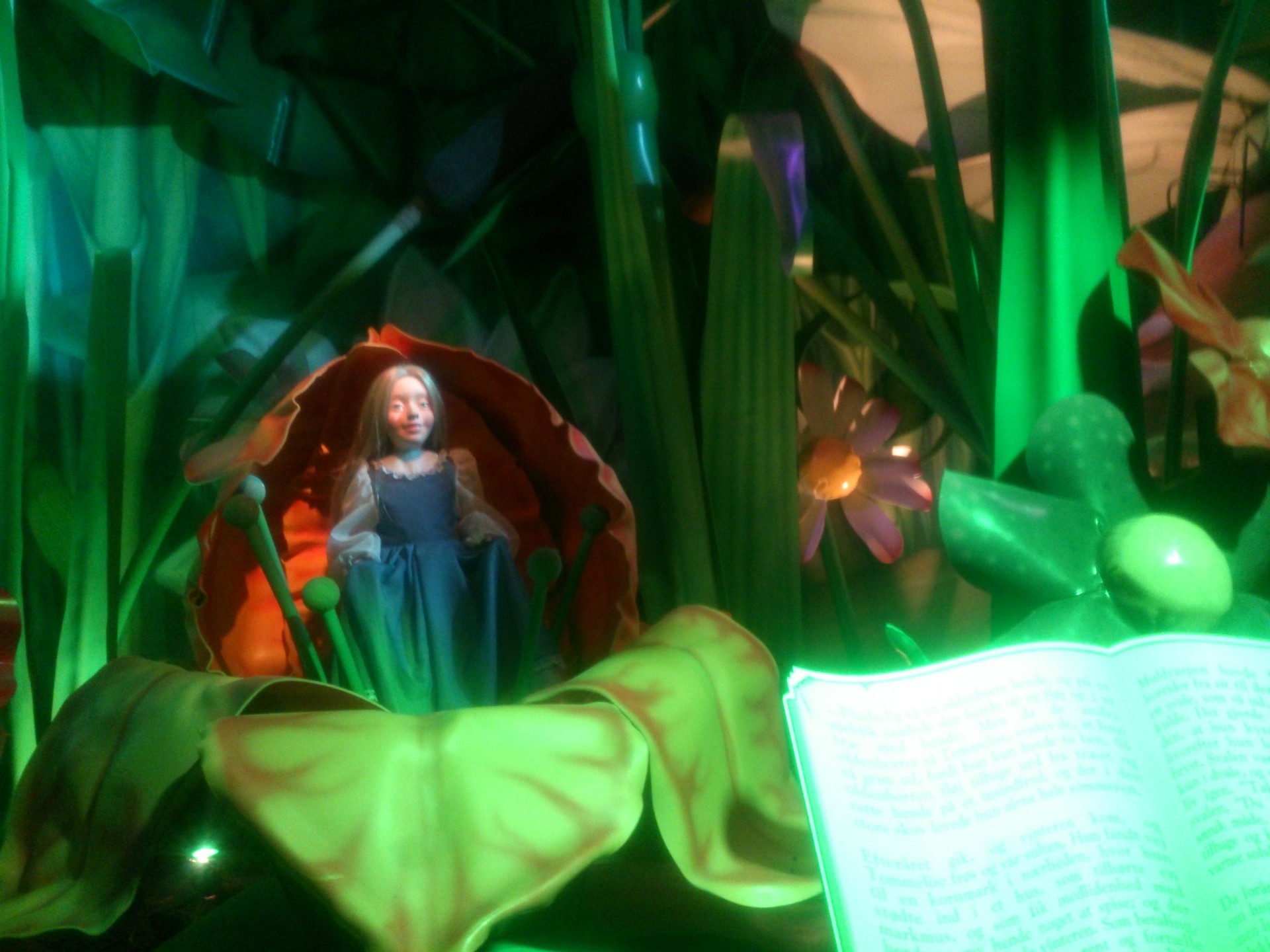
Photo gallery
Content available in other languages
Want to have your own Erasmus blog?
If you are experiencing living abroad, you're an avid traveller or want to promote the city where you live... create your own blog and share your adventures!
I want to create my Erasmus blog! →












































Comments (0 comments)